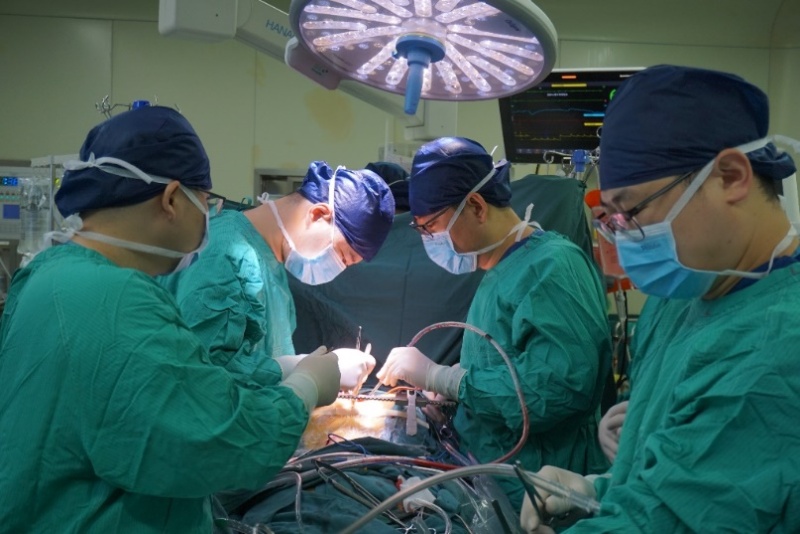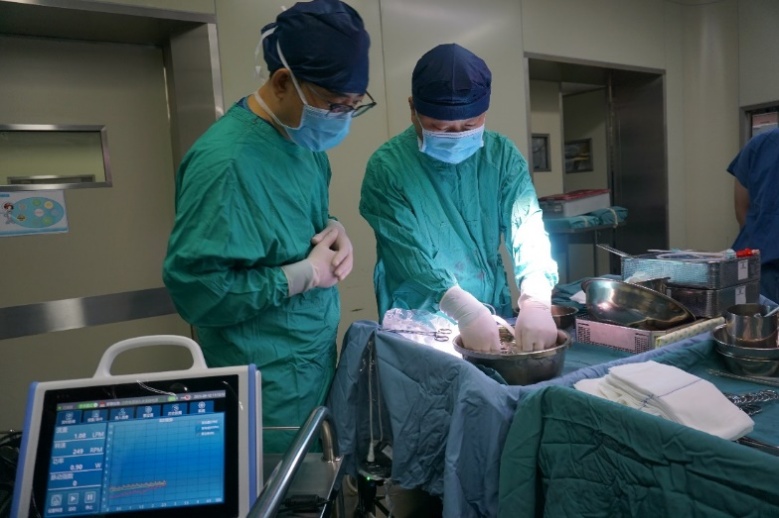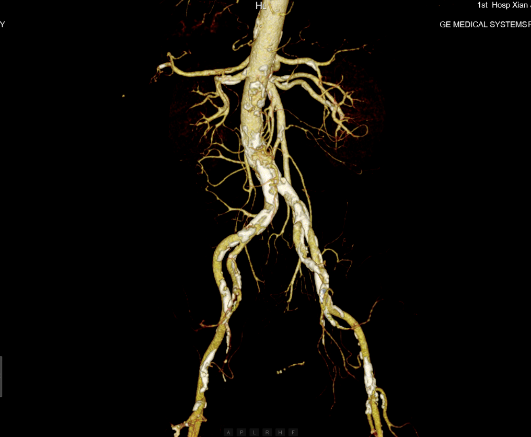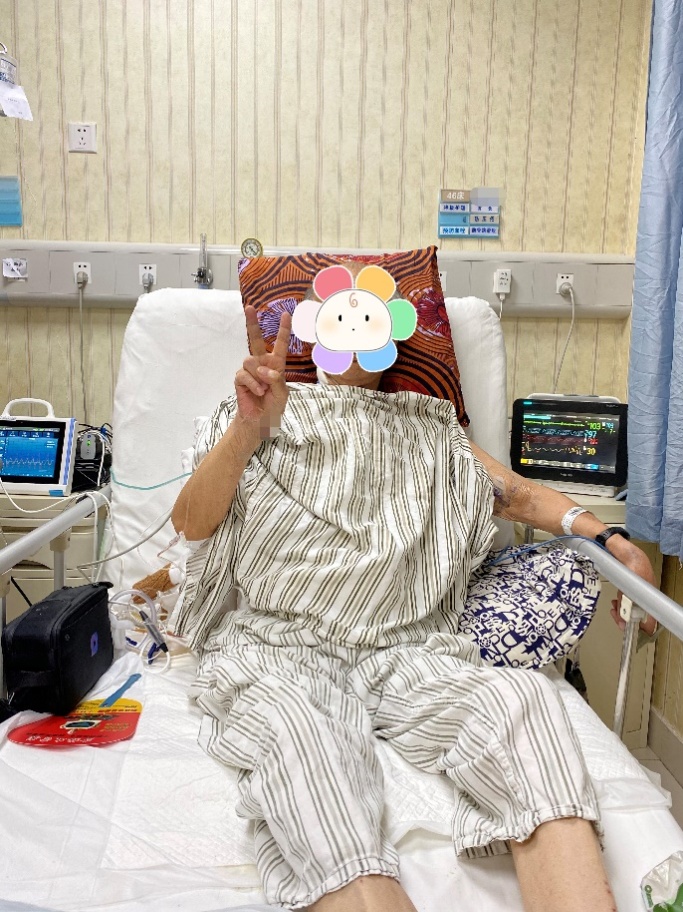Recently, under intimate cooperation of Department of Anesthesiology and Perioperative Medicine and Department of Ultrasound Medicine, Department of Cardiovascular Surgery from the First Affiliated Hospital (FAH) of Xi'an Jiaotong University (XJTU) successfully performed beating-heart implantation of the smallest and lightest China-made left ventricular assist device, the first case of this kind in northwest China. In addition, our hospital has become the third in China and the first center in northwest China to complete the implantation of all four categories of domestic left ventricular assist devices.

After the male patient, surnamed Zhang, was admitted to our hospital, Director Yan Yang from Department of Cardiovascular Surgery, Professor Li Yongxin, Professor Wang Haichen and Director Shi Tao’s team from ICU repeatedly evaluated and analyzed his physical conditions. The elderly male patient had a long-term history of recurrent heart failure, hypertension, coronary heart disease and diabetes mellitus, EF value was only about 20%, and the overall systolic function of heart was poor. He was diagnosed with end-stage heart failure. At present, the most effective treatments are heart transplantation and artificial heart implantation. However, considering his age, poor heart function and basic conditions, the risk of heart transplantation is high. Donor shortage was another challenge. After in-depth communication with his family members, it was determined to implant Corheart 6 in this patient, which is the smallest and lightest left ventricular assist device worldwide.

Preoperative CTA showed extensive calcification and stenosis in the neck vessels, ascending aorta, aortic arch, descending aorta and bilateral femoral arteries, occlusion of the left subclavian artery, and severe stenosis of the right iliac artery. There was limited space in the ascending aorta for vascular anastomosis.

On September 12, after preoperative preparations, the team from Department of Cardiovascular Surgery performed the implantation surgery for this patient with intimate cooperation from Department of Anesthesiology and Perioperative Medicine, Department of Ultrasound Medicine, cardiopulmonary bypass team and ICU from Department of Cardiovascular Surgery. The team avoided calcified vessels, selected the right radial artery and left femoral artery for invasive blood pressure monitoring, and chose the right axillary artery-internal jugular vein-femoral vein intubation for cardiopulmonary bypass. With normal operation of blood pump, the patient's vital signs tended to stabilize, and the implantation of left ventricular assist device was successfully completed. Postoperatively, the patient was transferred to ICU from Department of Cardiovascular Surgery for intimate monitoring and treatment. At present, the patient has been transferred to general ward.

The left ventricular assist device is an important device for treating end-stage heart failure. The domestic left ventricular assist device of Corheart 6 implanted in this patient is a third-generation non-contact magnetic levitation centrifugal pump. The diameter of the blood pump is merely 34 mm, weighed approximately 90 g, which is 40% smaller and 50% lighter compared with the same products. It is the smallest and lightest implantable full magnetic levitation artificial heart worldwide, especially suitable for end-stage heart failure patients with small cardiac chamber, low body weight and minimally invasive implantation. Moreover, small device size and intraoperative incision can mitigate surgical trauma. Besides, the longest battery life can reach up to 33 h. The external controller, battery and other components, which have to be worn for a long time after surgery, only weigh 800 g, which significantly reduces the burden and improves postoperative quality of life of the patients.